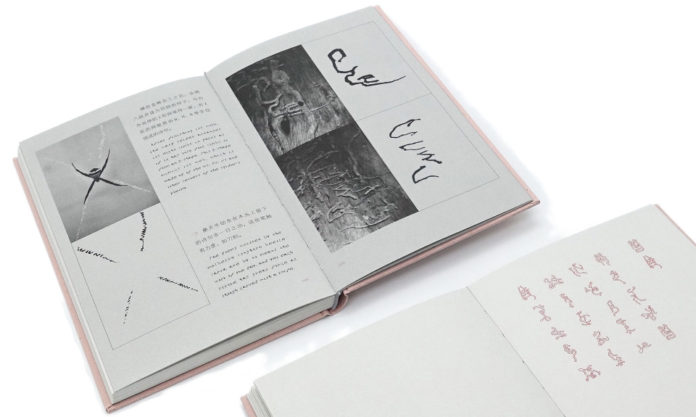Bilingual just isn’t enough. In his latest book, “Bug’s Poetry”, Nanjing artist, Zhu Yingchun, gathers the munching marks and twisting trails of twelve insects from around his studio, arranging them into lines of poetry that are incomprehensibly wonderful and wonderfully incomprehensible.
Surveying these common bugs through the everyday marks they leave, it’s remarkable how distinct and individual is the style of each “bug poet”. There are sharp scores from the Japanese Pine Sawyer, like sinister messages written in blood, and lines of circle after circle from the Carpenter Bee that are pretentiously minimalist. The flicks and dots of the Mulberry Longhorn Beetle look like Arabic; the loops and trails of the Land Snail’s like cursive Chinese.
One upping everyone else is the common earthworm, who presents more than one style; there is poetry in relief (as it wriggles through muddy puddles, eating along the way) and poetry in sculpture (what it poops out the other end).
Zhu’s poet friends are reliably arty.
There’s some more “readable” content too. Each poet is introduced in the book with a short blurb in Chinese, translated opposite into English. A fan of typography, I often mourn the lack of font diversity in Chinese books. Nine out of ten times the most boring of fonts is used; “songti”, its ubiquity I assume a preoccupation with standardisation.
That’s what makes this book refreshing. While the Chinese font ticks a box for legible, the English does not. It’s wild, yes, wild. Each letter of the Latin alphabet is taken from an existing chew mark left by a leaf miner fly larva, of which Zhu collected some ten thousand, which he brought together make the most eclectic and incomprehensible of fonts; bug font.
An English–Bug text conversion table at the back of the book is but a gesture; the real fun lies in taking the time to decipher the text yourself. In fact, during the making of the book, for fear it could not be read, a new and revised bug font was created by tweaking the original marks to make them more standard. The result was flat. Not only did it lack the intrigue of its forerunner, but also the human interference made the concept warped.
Bug’s Poetry also pokes fun at the associations we attach to books and literature, encouraging us to look at the world around us differently. We’re all familiar with the bookworm metaphor, describing someone who devours books, but have we ever considered that the munching tracks of the insect itself might be something of beauty, a hidden message in nature?
When was the last time, amidst fast-paced city life, that you slowed down to the pace of a snail and appreciated the intricate patterns they create with their bodies all day long?
As Nietzsche once said: “All great ideas come from reading books, slowly.” Zhu book may not impart knowledge in the traditional text-heavy way, but the clever concept and playful execution of Bug’s Poetry speaks louder than words, whether they are Chinese, English or any manner of nature’s languages.









